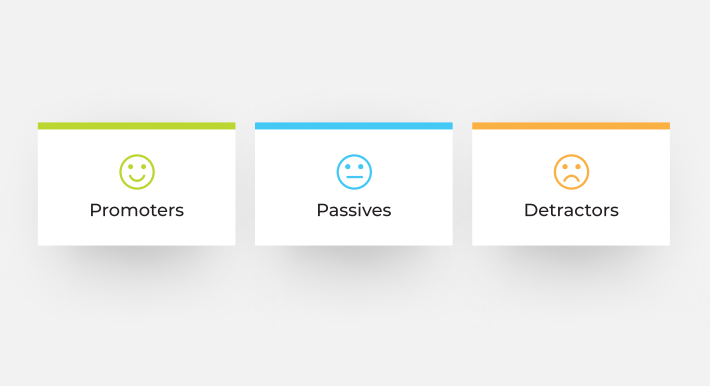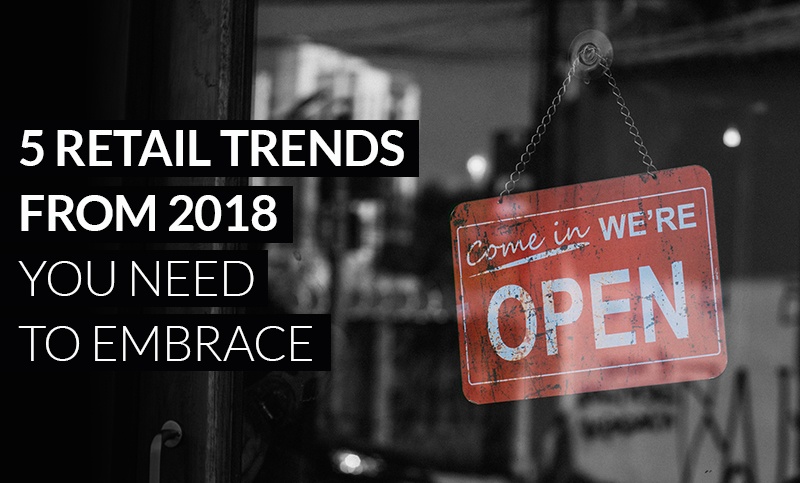Few retail trends have risen to prominence this year, reshaping the way we sell, we buy and the way we think about entire B2C interactions. We are well in the midst of disruption and that’s not going to change anytime soon. It is up to retailers to keep current with new customer trends and to pick and chose the right bandwagon to jump on in order to future-proof their business.
Here is a look at some leading examples from retailers worldwide, what the important trends are and how retail can adapt and grow with the tide.
Transparency
We’ve all heard the quote “if you stand for nothing, you will fall for anything”. Today's customers believe that their purchases have a flow-on impact on the world around them - starting with the products source materials, manufacture, packaging and so on, retailers need to cater to the conscious customer by being sustainable and environmentally friendly.
Brands stand to gain an edge on their competition by clearly communicating their sustainable convictions.
I case of food, as many as 85% of customers believe that it’s highly important for brands to communicate how their food is made and what is in it, while willing to pay a premium price if they know their food has been provided sustainably.
In the fashion world, global brands such as Gucci, Calvin Klein, Ralph Lauren, Armani and Tommy Hilfiger have entered into Fur Free Alliance, an organisation focused on sustainability and stopping the culling of animals for fur.
Corporate social responsibility has become imperative for businesses who wish to be transparent with their customers and grow their brand loyalty.
Going omni-channel
A catch-all 0800 helpline for all customer enquiries is no longer good enough. Salesforce study notes that 64% of consumers said they expect companies to respond to and interact with them in real time. This number increases even more for millennial customers. In the age of personalisation and instant gratification, brands need to be readily available on all channels, digital and physical, where their customers are likely to find them - website chatbots, facebook messenger and many more. Considering that many customers research their purchases and reach the decision stage before they engage directly with a brand, businesses need to be present at the intersection of engagement and purchase, increasingly being one and the same for customers.
Leading retailers have been ‘merging bricks and clicks’ - experimenting with hybrid omni-channel experiences. Shopple has been connecting online stores with brick-and-mortar stores to create a virtual shopping environment. A store assistant can take a Facetime call from an online shopper and take them around the store, explaining how an item feels and smells without them having to be there.
Convenience, convenience, convenience
Retailers are increasingly adopting a strategy traditionally native to digital marketing and sales - removing any barriers to the customer’s purchase experience. The starting point for this approach being that the more steps there are leading to a sale, the less likely the sale is to be completed.
The must-do for businesses is to make it as easy as possible for customers to spend - self-serve checkouts, GPS-assisted delivery address identifiers, frictionless shopping experiences.
Some brands make it very easy to give their customers what they want, in minimum time, eliminating checkouts completely. For example, Apple stores where sales assistants provide service and sales all-in-one using customised iPhones.
Dominos and Amazon have trialled delivery via drones, simplifying the delivery to their customers. Another example worth noting is that 45% of North American households are prepared to pay an annual fee for Amazon Prime, to be guaranteed a 2-day delivery time on all of their purchases. Consumers require convenience regardless if they are shopping remotely or in-store.
Artificial intelligence & personalisation
Checkout impulse buys have been around for many many years. Imagine these taken into the future - personalised offers complete with lighting, sound, smells and even temperature. Marketers have used personalisation, automation and CRM systems for a while now to offer their prospective customers items and services that appeal to them. Most of us belong to some sort of loyalty scheme with a supermarket or petrol company. Businesses can now use this data, interlaid with machine learning to push personalised promotions to customers.
Data is now used for target audience segmentation down to the most granular level, meaning that brands now use their data to leverage hyper-personalisation, influencing current purchases and predicting future ones.
Not confined just to marketing and sales, AI is being brought into households via home automation devices. The likes of Google Alexa and Amazon Echo allows us to search, browse and buy from our couches. Voice search is one of the new frontiers for retailers - many are familiar with Search Engine Optimisation - a compulsory activity for any retailer that wants to be visible and easy to find by prospective customers. Increasing Voice Search volumes mean that Voice SEO is a new element to seriously consider adding to your retail digital toolbox.
Rethinking brick-and-mortar stores
Retail is not dead. But, there is good news and there is bad news regarding physical stores. The good news is - customers are still happy to come into a store. The not so good news is that their expectations have increased considerably and retailers need to lift their customer experience game.
Customers generally fall into two camps - ones ready to buy and ones who are not yet. The ones ready to buy have most likely already done their price and comparison research and just want to pop into the store and make a purchase. These customers expect quick, efficient service and easy purchase completion, meaning multiple payment options and short checkout queues. Consider how leading retail businesses solve these issues for their customers - supermarket self-service lanes, quick payments using pay-wave, Google and Apple wallets and more. The Amazon Go store has gone as far as having no sales assistants or checkouts at all, their customers use an app for entry and purchases, providing a seamless shopping experience.
The other type of customer - those browsing and not ready to buy - requires a lot more effort to attract and immerse into a brand experience before they convert, much more so than in the past. Many leading brands see their physical stores as brand experience immersion points than just a bunch of stock on shelves. Nespresso offers their visitors a personalised experience with many facets, including participation in their brand values and exploring Nespresso’s equipment and product range in a designer atmosphere, created to mesmerise and delight. Automotive retailers Tesla, Mazda and Toyota have changed their business models from car dealer yards to interactive showrooms where customers can, through virtual and augmented reality, see what it would be like to sit in one of the vehicles, personalised in real time by the customer.
Retailers have always been agile and quick to adapt to new trends that bring business through their doors. Embracing new digital trends means that retailers have to know their customers better, through feedback and customer data, as well as partnering with tech innovators to activate that data. The retail space has never been as competitive across the board, innovating and growing is key to staying ahead of the competition and growing a thriving business.
Don't miss our free email Crash Course in Customer Feedback -
sign up for our short series!








